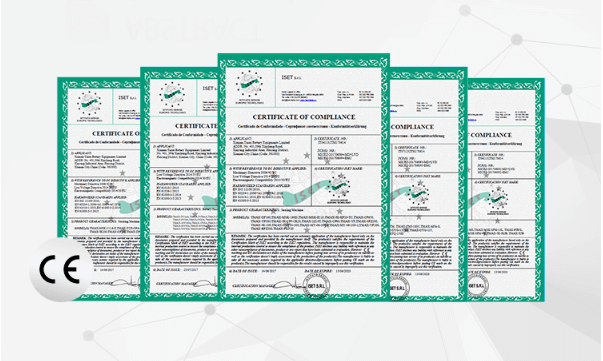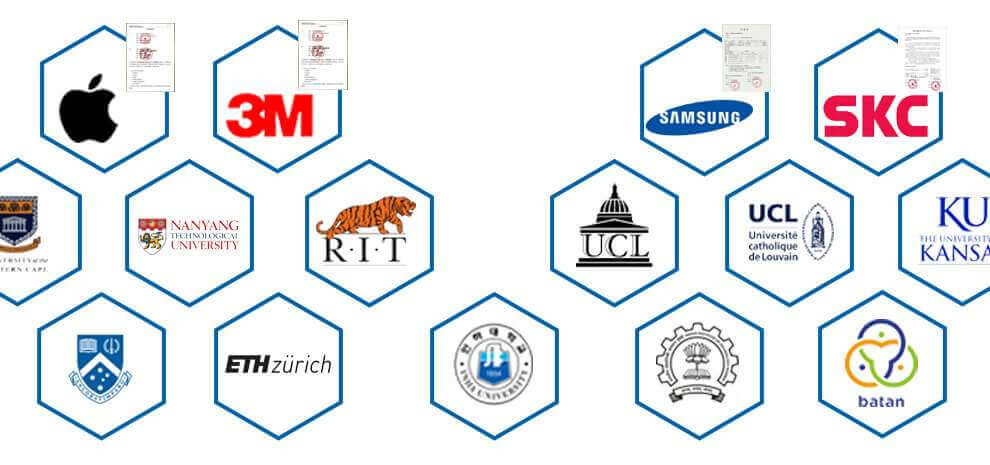products categories
- Battery Production Equipment Line
- Battery Lab Pilot Equipment Line
- Lithium Battery Pack Assembly Line
- Solid State Battery Assembly Line
- Sodium Ion Battery Production Line
- Supercapacitor Assembly Line
- Lithium Ion Battery Recycling Plant
- Dry Electrode Preparation Solution
- Perovskite Based Solar Cell Lab Line
- Li ion Battery Materials
- Cathode Active Materials
- Anode Active Materials
- Customized Battery Electrode
- Coin Cell Parts
- Lithium Chip
- Cylindrical Cell Parts
- Battery Current Collectors
- Battery Conductive Materials
- Electrolyte
- Metal Mesh
- Battery Binder
- Separator and Tape
- Aluminum Laminate Film
- Nickel Strip
- Battery Tabs
- Graphene Materials
- Nickel Felt
- Titanium Fiber Felt
- Battery
- Battery Pack Machine & Compoments
- Battery Pack Compoments
- Turnkey Solutions Battery Pack Assembly Line
- Cell Sorter
- Battery Pack Spot Welder
- Laser Welder
- Battery Charging Discharging Tester
- Battery Pack Aging Machine
- Battery Pack Comprehensive Tester
- CCD Visual Inspector
- Battery Pape Sticking Machine
- BMS Testing Machine
- Al Wire Bonding Machine
- Lithium Battery Machine
- Battery Tester & Analyzer
- Battery Safety Tester
- Battery Material Tester
- Rolling Press Machine
- Spot Welding Machine
- Vacuum Mixer Machine
- Crimping/Disassembling Machine
- Vacuum Sealing Machine
- Electrolyte Filling
- Stacking/Winding Machine
- Electrode Cutter/Slitter
- Pouch Forming Machine
- NMP Solvent Treatment System
- Lithium Battery Production Plant
- Vacuum Glove Box
- Furnaces
- Coaters
- Hydraulic Press
- Ball Mill
- Planetary Centrifugal Mixer
- Cutting Machine
- Laboratory Machine
- Metal Foam
contact us
- If you have questions, please contact us, all questions will be answered
- WhatsApp : +86 13174506016
- Email : David@tmaxcn.com
- Email : Davidtmaxcn@gmail.com
- Add : No. 39, Xinchang Road, Xinyang, Haicang Dist., Xiamen, Fujian, China (Mainland)
100MWH Semi-auto EV Car Battery Prismatic Cell Pilot Scale Manufacturing Line
Type:
Semi-automaticNet Weight:
38kgCompliance:
CE CertifiedWarranty:
1 year warranty with whole life technical supportPlace of Origin:
ChinaShipping Port:
XiamenDelivery Time:
days
- WhatsApp : +86 13174506016
- Email : David@tmaxcn.com
- Email : Davidtmaxcn@gmail.com
- Wechat : 18659217588
100MWH EV Car Battery Prismatic Cell Aluminium Case Cell Pilot Scale Manufacturing Line
Prismatic Cell:
Prismatic cell is often used for high capacity battery applications to optimise the use of space. These designs use a stacked electrode structure in which the anode and cathode foils are cut into individual electrode plates which are stacked alternately and kept apart by the separator. The separator may be cut to the same size as the electrodes but more likely it is applied in a long strip wound in a zig zag fashion between alternate electrodes in the stack.
Equpment List:
S NO. |
Equipment |
1 |
Cathode Mixer |
2 |
Anode Mixer |
3 |
Cathode Slot Die Coater |
4 |
Anode Slot Die Coater |
5 |
NMP Recovery System |
6 |
Cathode Calender |
7 |
Anode Calender |
8 |
Cathode Slitting Machine |
9 |
Anode Slitting Machine |
10 |
Cathode Die Cutting Machine |
11 |
Anode Die Cutting Machine |
12 |
Auto Stacking Machine |
13 |
Hot Press Machine |
14 |
Ultrasonic Battery Core Pre Welding Machine |
15 |
Ultrasonic Battery Core Welding Machine |
16 |
Cover Plate Welding Machine |
17 |
Battery Core Film Covering Machine |
18 |
Integrated Machine for |
19 |
Primary Helium Testing Machine |
20 |
High Level Vacuum Oven |
21 |
Electrolyte Filling |
22 |
Negative Pressure Forming Machine |
23 |
Sealing &laser Welding Machine |
24 |
Grading Machine |
The process for prismatic cell is illustrated in the following diagram:

The anodes and cathodes in Lithium cells are of similar form and are made by similar processes on similar or identical equipment. The active electrode materials are coated on both sides of metallic foils which act as the current collectors conducting the current in and out of the cell. The anode material is a form of Carbon and the cathode is a Lithium metal oxide. Both of these materials are delivered to the factory in the form of black powder and to the untrained eye they are almost indistinguishable from eachother. Since contamination between the anode and cathode materials will ruin the battery, great care must be taken to prevent these materials from coming into contact with eachother. For this reason the anodes and cathodes are usually processed in different rooms.

Slitting:
The electrode shall be slit according to the size of the battery to be produced.

Liquid injection and formation:
The formation of lithium battery mainly has two functions: one is to convert the active substances in the battery into substances with normal electrochemical action by means of the first charge; The other is to form an effective passive film or SEI film on the electrode, mainly the anode.


Battery Pack Assembling:
After the single battery is made. Grouping and series parallel connection of these batteries become the foundation of electric vehicle power battery system - Battery Module.








 ru
ru


 Iris@tmaxcn.com
Iris@tmaxcn.com David@tmaxcn.com
David@tmaxcn.com +86 13174506016
+86 13174506016 18659217588
18659217588